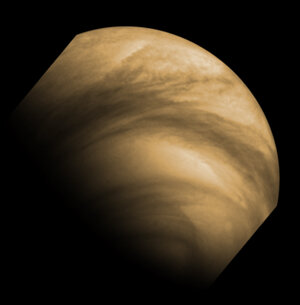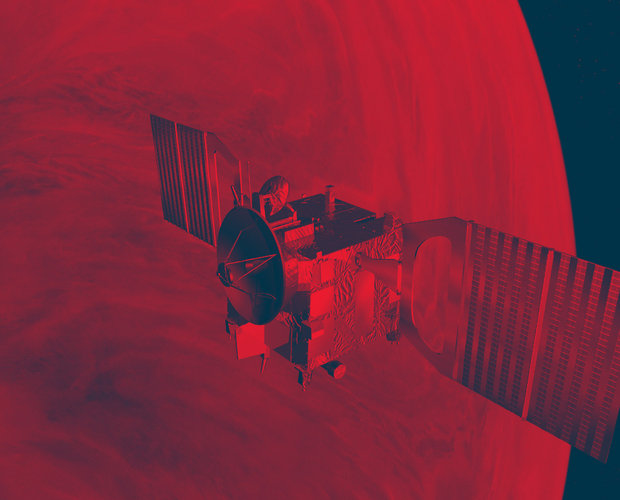From Venus Express to Envision: European Venus exploration
The European Space Agency’s landmark Venus Express mission, which orbited the planet from 2006 to 2014, was Europe’s first mission to Venus. Its discoveries answered many questions, especially concerning the planet’s atmosphere.
Still, many mysteries remain, in particular around the planet’s geological history and activity. Envision, with its next-generation suite of instruments, is set to pick up the story.
Why Venus?
Venus may have once looked a lot like Earth. But today its carbon dioxide-rich atmosphere is thick and toxic with clouds of sulphuric acid droplets. Its inhospitable surface sees temperatures of around 465 °C and a pressure 90 times greater than at Earth’s surface. Despite being almost the same size as Earth and at a similar distance to the Sun, Venus may have experienced an extreme runaway greenhouse effect in its distant past. Understanding if and how our planetary neighbour underwent this dramatic climate change and followed such a radically different evolution is a key question in planetary science.
Venus has been visited by atmospheric probes, landers and orbiters, as well as satellite flybys, since the 1960s, but its secrets are wrapped almost as tightly as its seemingly impenetrable atmosphere. Trying to establish the relationship between the planet’s atmosphere, surface and interior is key to understanding its history and current state. Envision will be the first mission to address all these elements of the Venus system at the same time, providing an all-encompassing view of the planet and its processes.
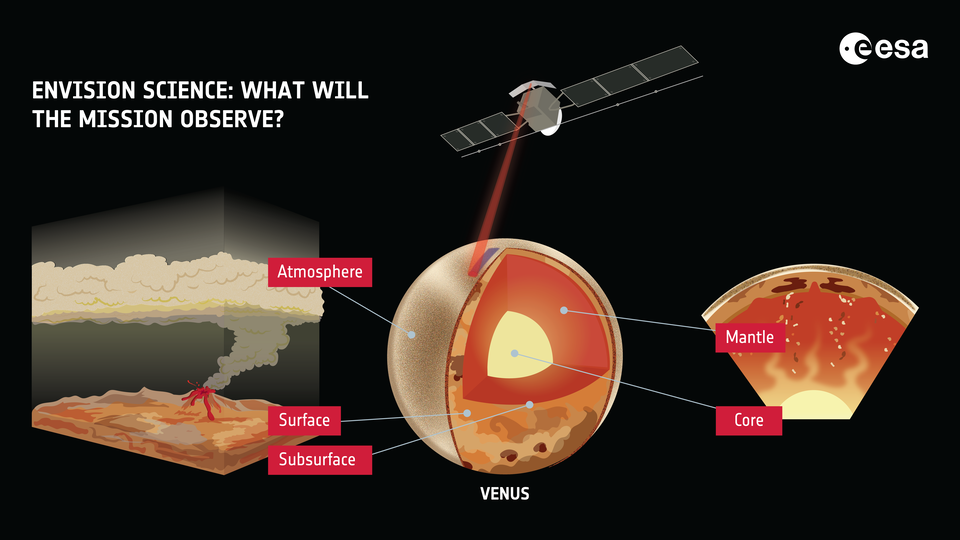
Trailblazing the way
Venus Express was ESA's first spacecraft to study our nearest planetary neighbour. The spacecraft was an adapted version of Mars Express and used many of the spare instruments developed for that mission as well as for ESA’s Rosetta mission. Envision’s instrument suite builds on heritage from across ESA’s family of planetary science missions, as well as instrumentation used to map the atmosphere and surface of our own planet Earth.
Venus Express focused on atmospheric research, investigating the chemistry and dynamics of the planet’s atmosphere and clouds in detail. However, some of its most surprising results revealed hints of current volcanic activity at the planet’s surface. This was possible since its heat-seeking infrared instruments could look through the clouds. Dramatic increases of sulphur dioxide in the atmosphere above the clouds, combined with changes in surface emissivity and temperature, hinted at possible volcanic hotspots.

Envision will study the planet’s surface in greater detail than ever before: its radar will be the first instrument to image parts of the planet at a very fine resolution of 10 m, distinguishing features one order of magnitude smaller than NASA’s Magellan orbiter.
Envision will also be the first mission to Venus with a subsurface radar sounding instrument to map out the layering of the planet’s underground features, which is related to surface mass movements and volcanic activity. Moreover, the combination of measurements by multiple instruments will enable scientists to look not only for structural changes on the planet’s surface but also temperature changes, essential to understanding if – and how – the planet is still active today.
Venus Express was equipped with instruments capable of probing the atmosphere’s chemical components below the cloud deck and on a global scale. It also made the first ever detection of atmospheric water loss at Venus, showing that its constituent hydrogen and oxygen atoms are split by solar radiation and swept away by the constant stream of particles blown out by the Sun, the solar wind. The results implied that Venus has been losing a large quantity of water to space over billions of years.
Did Venus once have oceans of liquid water like Earth? If yes, how and when was this water lost, and was it triggered by a runaway greenhouse effect? Envision will look for traces of past water on the surface of Venus through infrared and radar mapping of what we assume to be the oldest parts of the surface, to investigate their physical and chemical properties. Envision will also measure gas concentrations with higher precision over a greater range of altitudes, and over more of the planet, for a clearer understanding of the atmospheric water cycle.
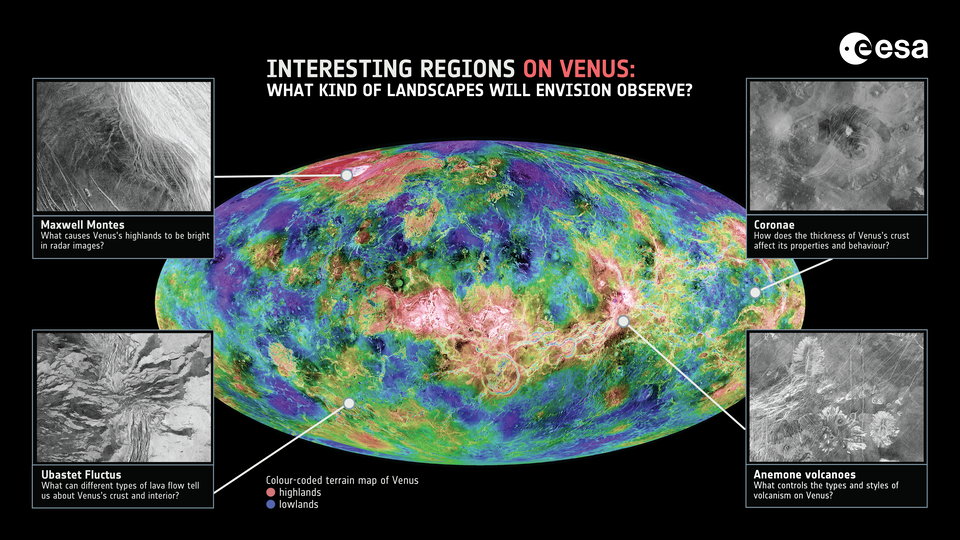
Picking up the baton on a decades-long survey
Envision’s advanced instrumentation will enable researchers to pursue the most intriguing open questions raised by Venus Express and its predecessors. Placing Envision’s data in context with previous measurements spanning half a century will also be essential to building up a clearer picture about the processes in action at Venus over long timescales.
This will include identifying changes in surface features and temperatures, such as new lava flows or hot spots, and variability in atmospheric composition and cloud dynamics. Furthermore, adding new data on Venus’ rotation rate – which Venus Express showed to be 6.5 minutes slower than Magellan had recorded 16 years earlier – will lead to a better understanding of the nature and evolution of the planet's interior and atmosphere.
New viewpoint
Envision will survey the planet from much closer distances than its predecessor. While Venus Express’s 24-hour highly elliptical near-polar orbit took it from 250 km out to 66 000 km from the planet, Envision is a low-altitude polar orbiter, sweeping the planet between 220 and 510 km once every 92 minutes.
The choice of orbit and mission duration will allow Envision to build up near-global maps of the atmosphere, surface and interior properties, as well as targeted high-resolution radar imaging. The mission design will also enable repeat imaging for surface change detection, stereo imaging for surface topography, and polarimetric imaging for surface texture information.
While Venus Express’s orbit resulted in a focus on the planet’s southern hemisphere, Envision will be able to fill in the gaps. As well as improved radar mapping, Envision will also deliver on topography, surface composition and temperature mapping, and the high-resolution gravity mapping needed to constrain the planet’s internal structure.

Lessons learnt
Lessons learnt from Venus Express’s experimental aerobraking phase at the end of its mission laid the foundations for achieving Envision’s near-circular orbit, which will be achieved by 11 months of aerobraking. This technique exploits the drag of a planet’s atmosphere to gradually slow the spacecraft down and capture it in the desired orbit.
As Venus Express surfed in and out of the planet’s atmosphere down to 130 km, flight controllers watched the heating response and effect of the atmospheric drag on the spacecraft and gained valuable experience of operating in this kind of extreme environment. Aerobraking has since been used by ESA’s Trace Gas Orbiter to enter orbit around Mars – the first time that ESA used the technique to achieve a routine orbit around another planet. Envision will be next.

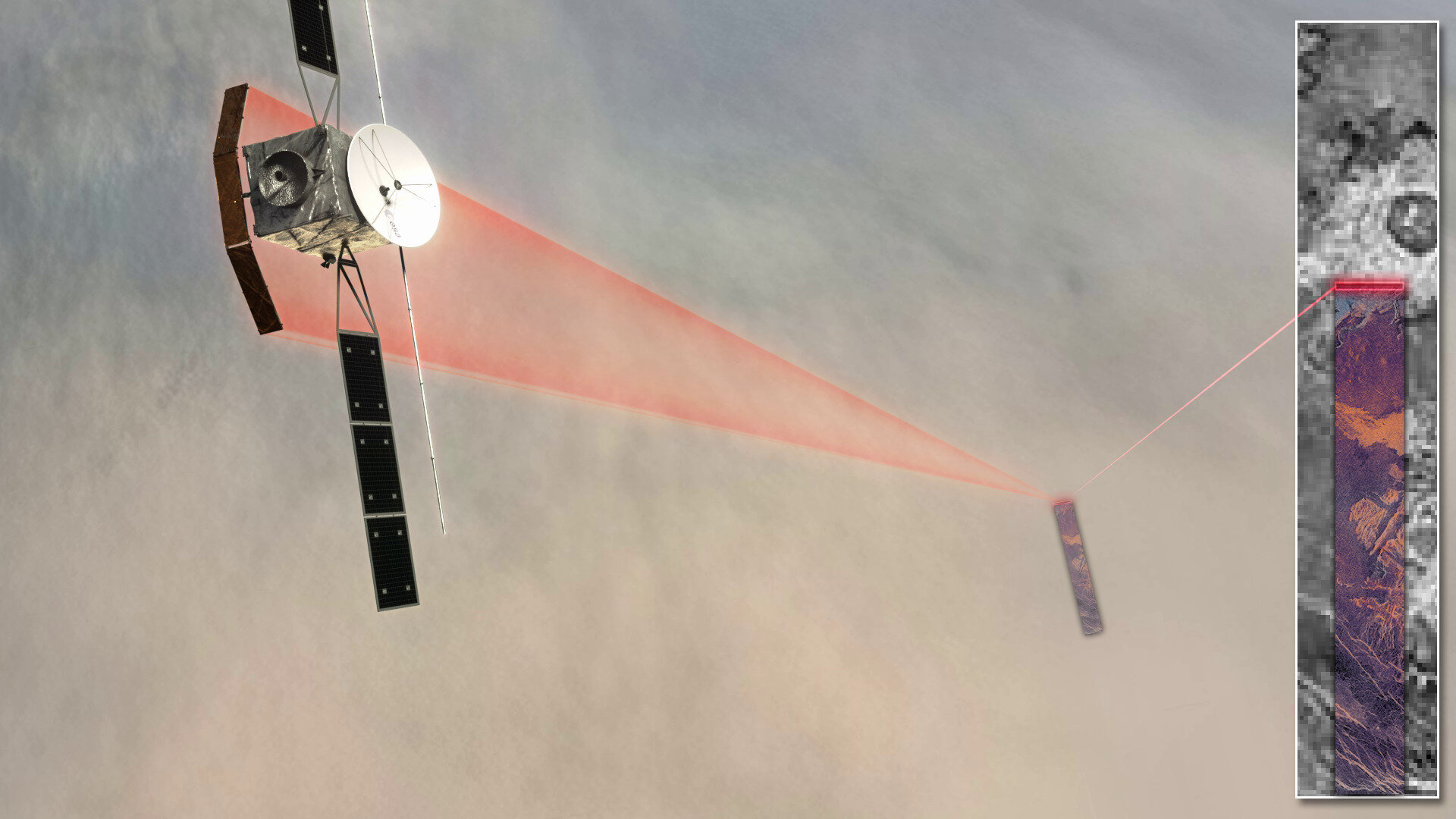
Access the video
Venus and beyond
Envision’s anticipated results will have direct application to our understanding of planets beyond our own Solar System, too. Understanding the evolution of Venus’s environment with respect to ‘habitable zones’ around a star is imperative to tackle the fascinating question of whether life has ever evolved beyond Earth – in our own Solar System or beyond.
ESA’s upcoming exoplanet missions Plato (due for launch in 2026) and Ariel (2029), together with Cheops (in orbit since 2019), are set to advance our knowledge even further in this fast-growing area. Envision has synergies with Ariel in particular, which will look at the atmospheric composition of exoplanets – some of which may be rocky planets like Venus.

With the legacy of Venus Express closely behind it, Envision will not only springboard us into a new era of scientific discovery at Venus, but will have a broader impact on planetary – and exoplanet – science in general.














 Germany
Germany
 Austria
Austria
 Belgium
Belgium
 Denmark
Denmark
 Spain
Spain
 Estonia
Estonia
 Finland
Finland
 France
France
 Greece
Greece
 Hungary
Hungary
 Ireland
Ireland
 Italy
Italy
 Luxembourg
Luxembourg
 Norway
Norway
 The Netherlands
The Netherlands
 Poland
Poland
 Portugal
Portugal
 Czechia
Czechia
 Romania
Romania
 United Kingdom
United Kingdom
 Slovenia
Slovenia
 Sweden
Sweden
 Switzerland
Switzerland



























